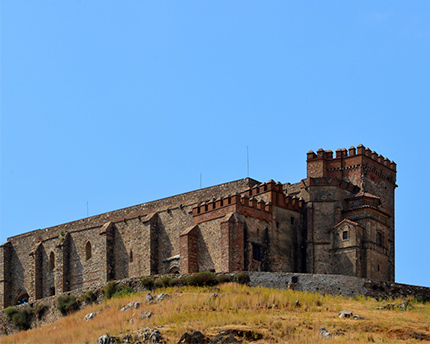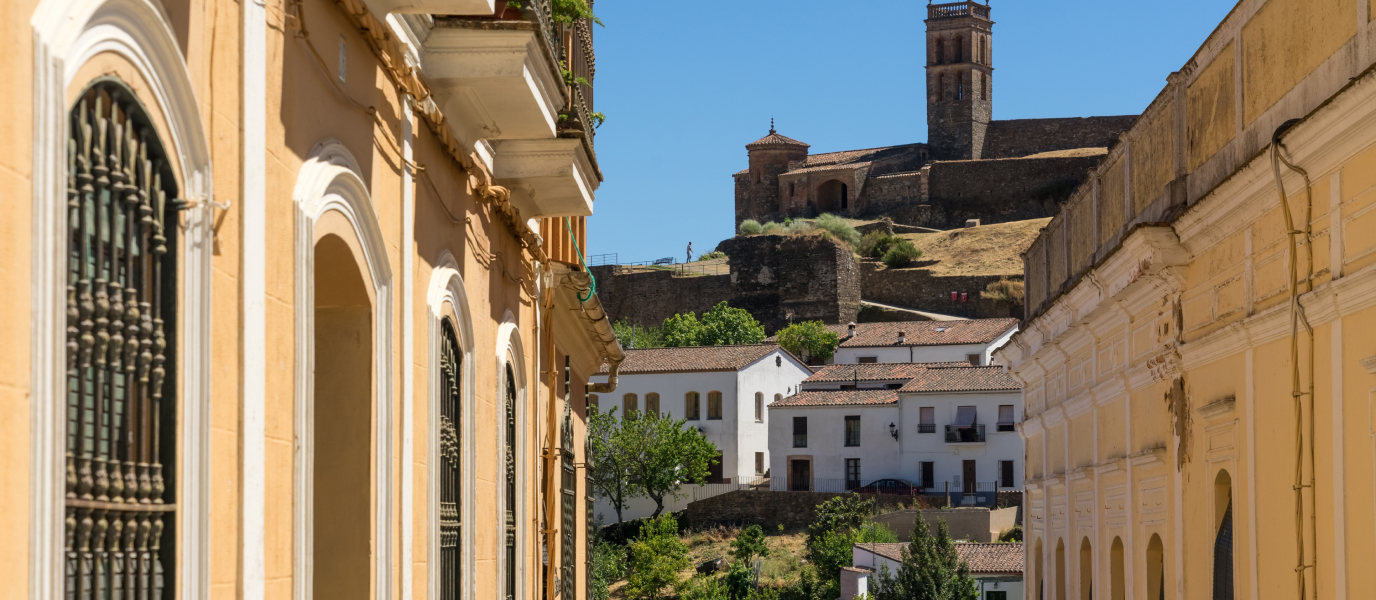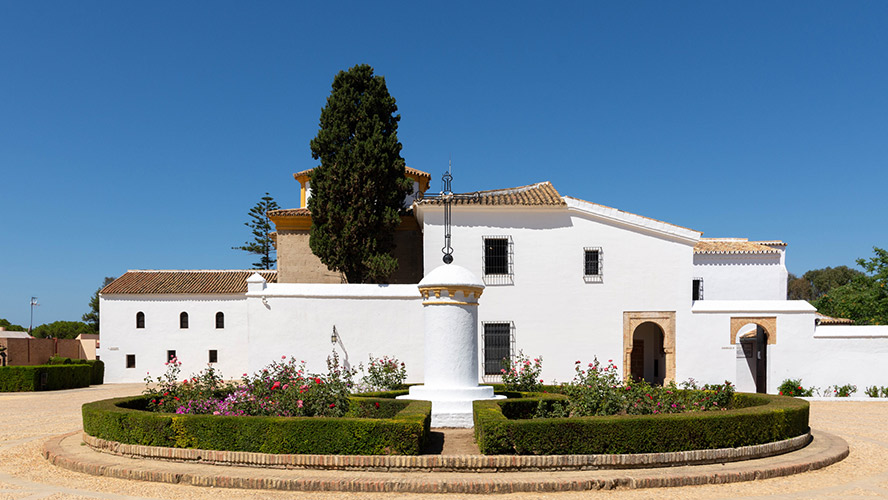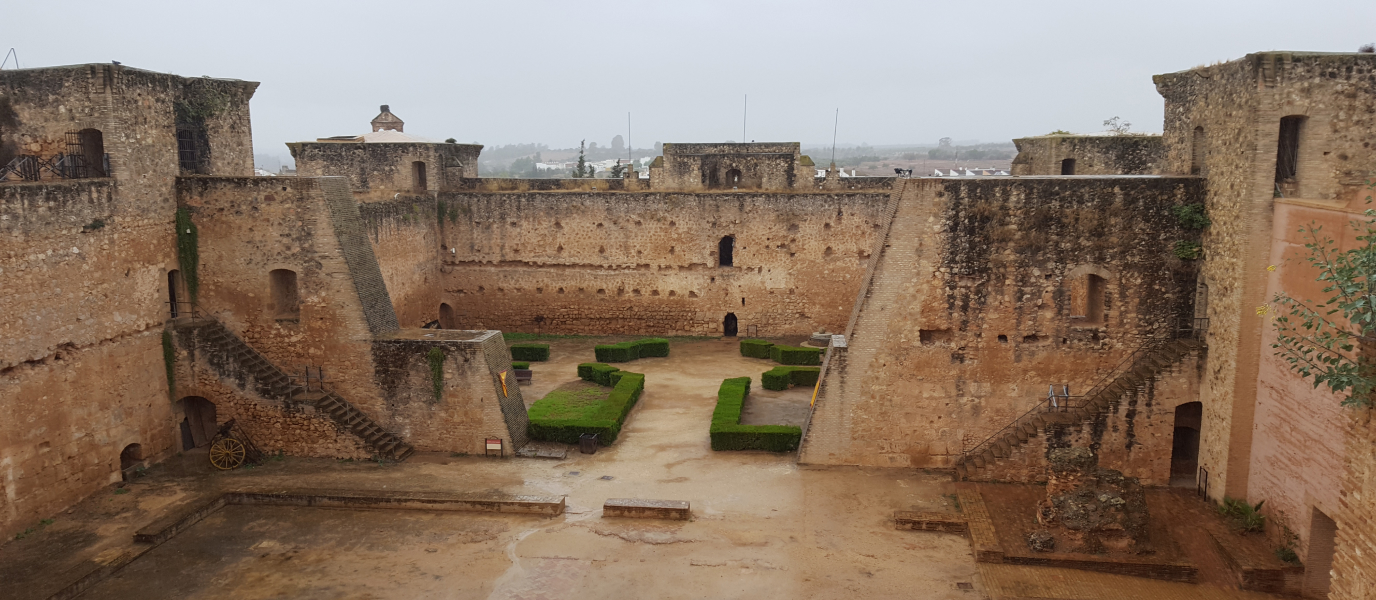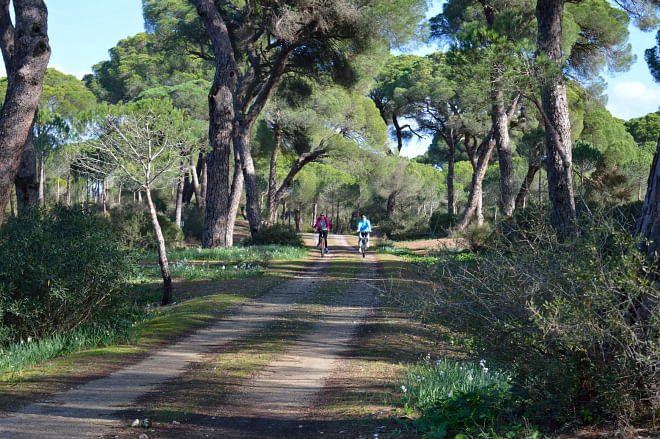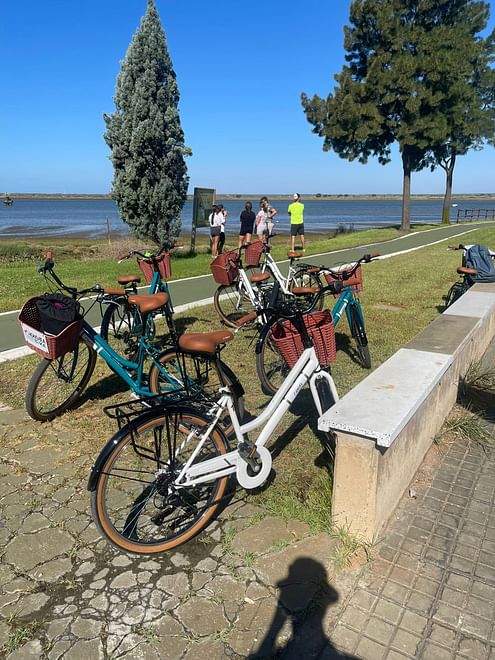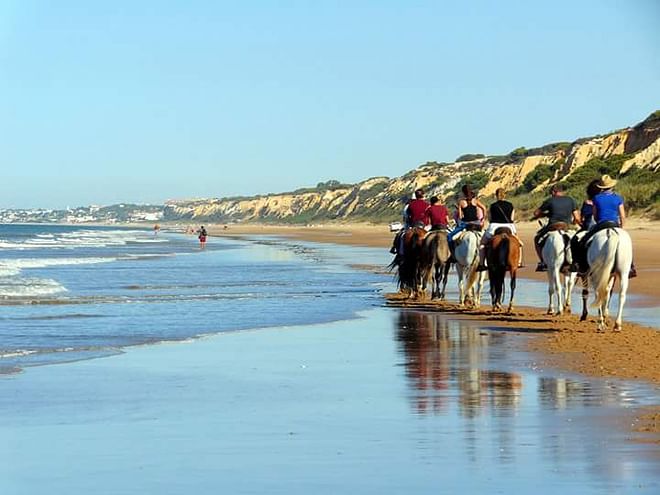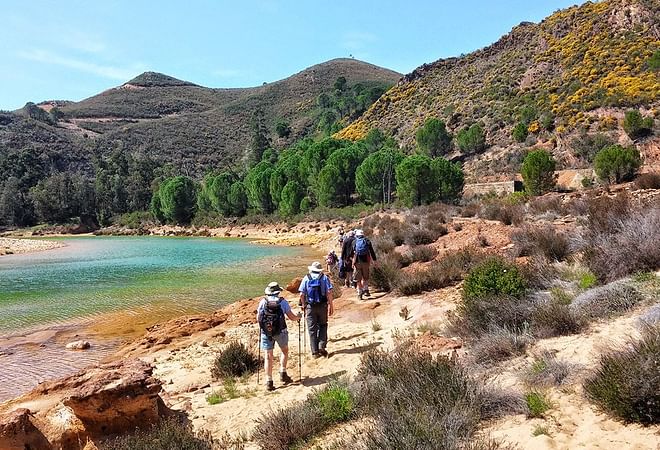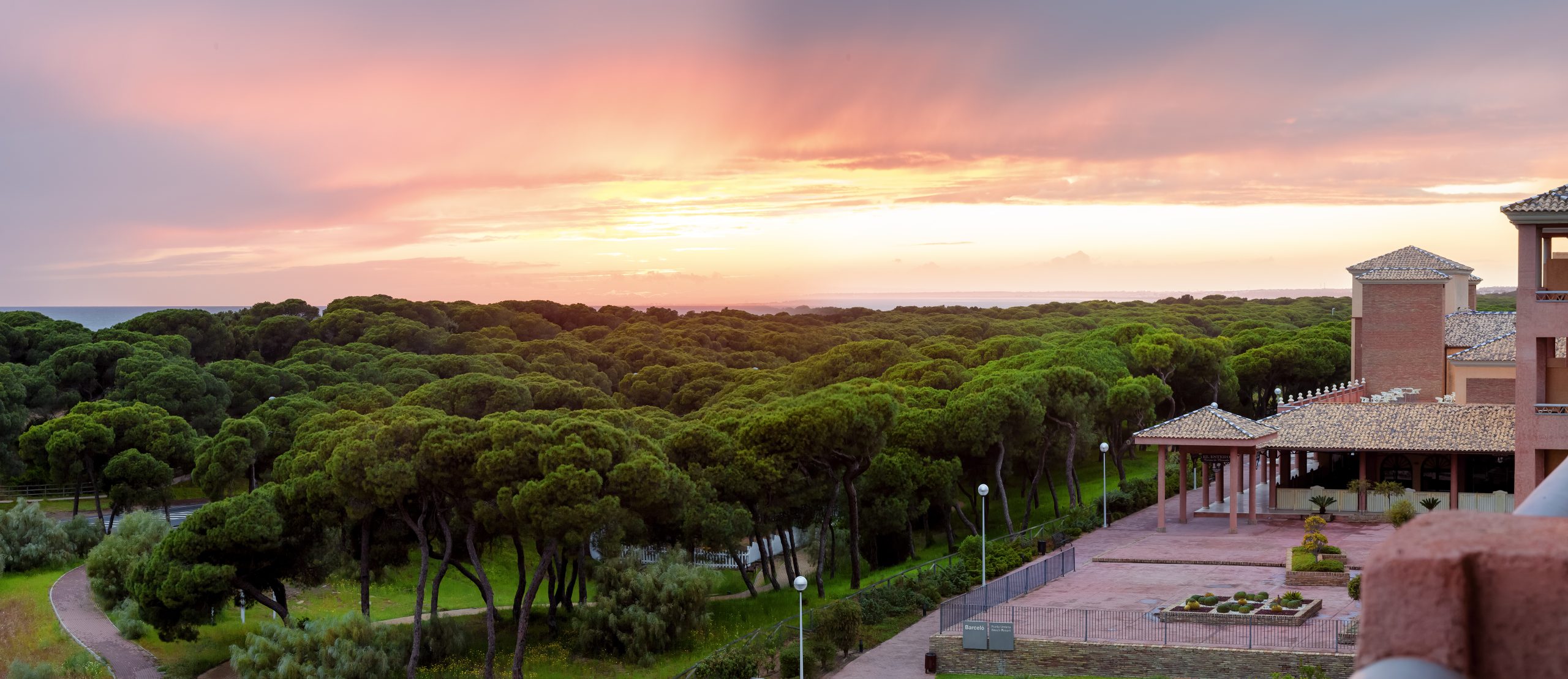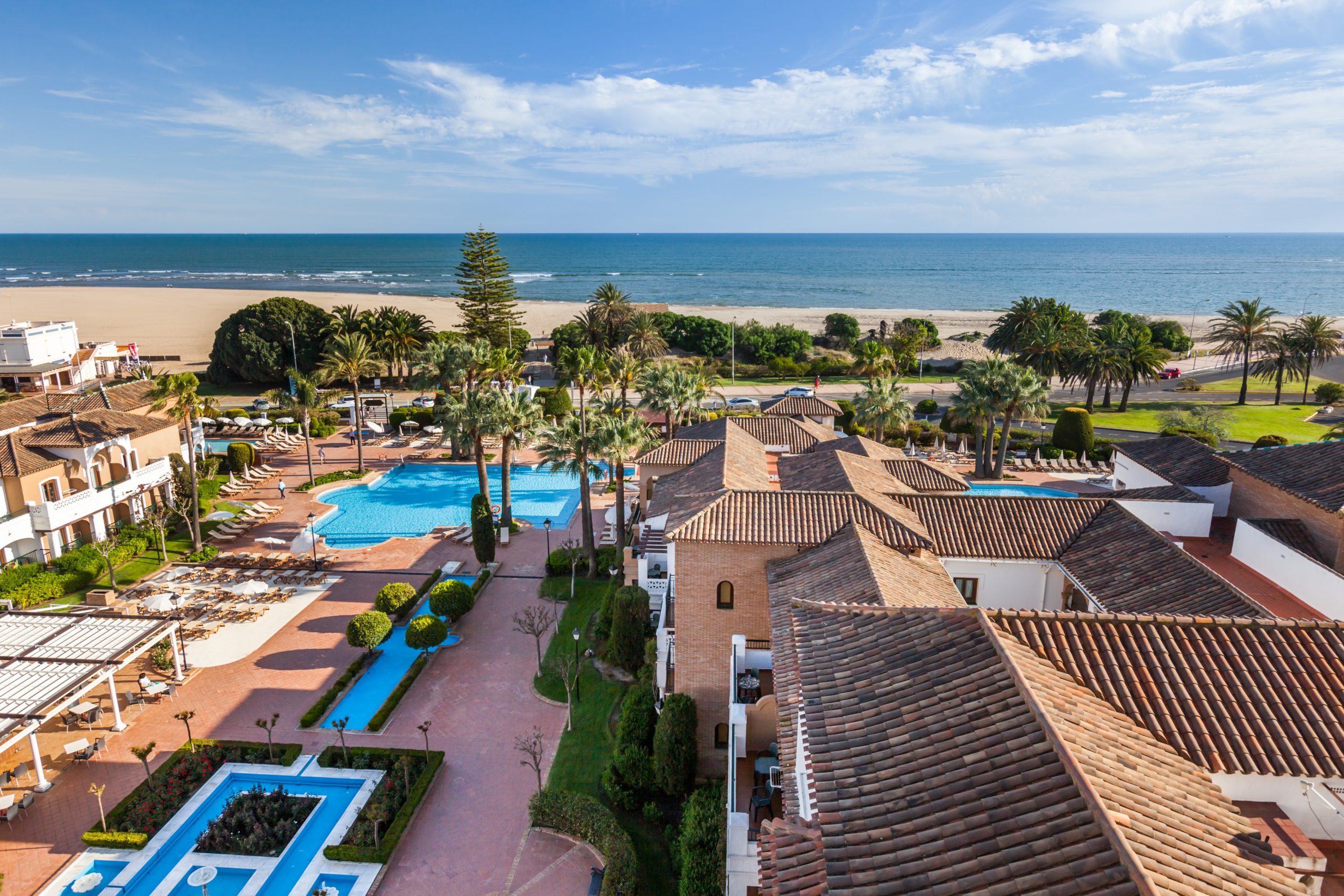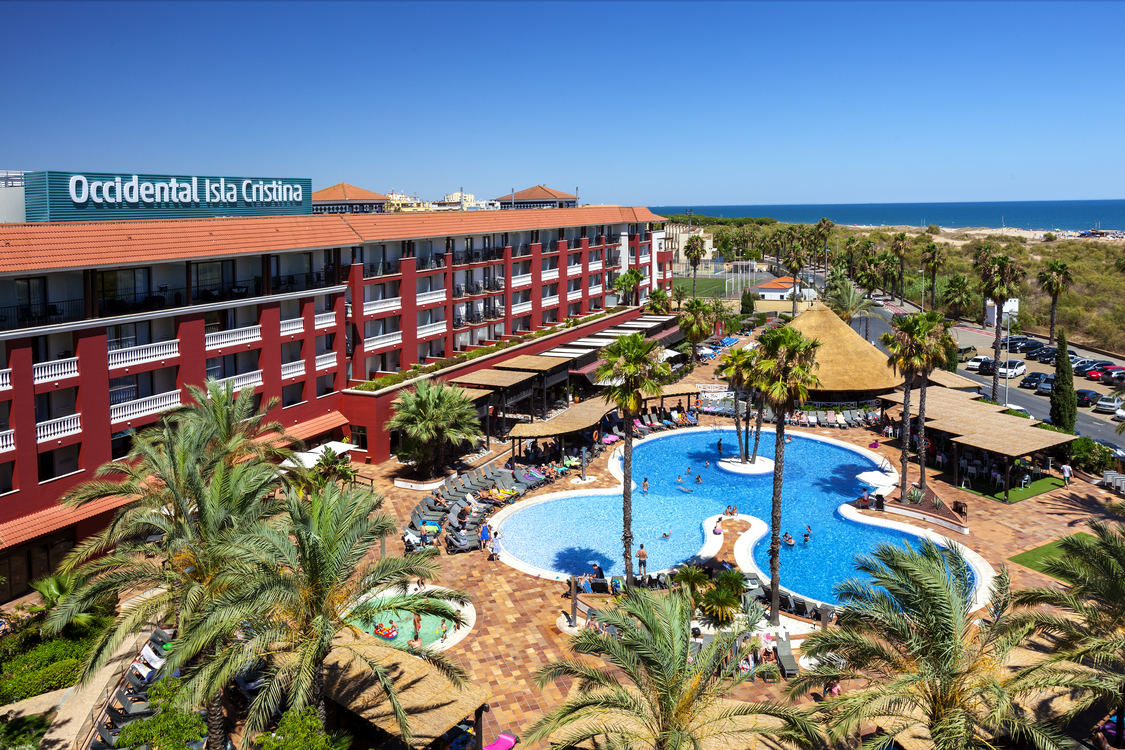Incredibly, Aracena is just one of a number of beautiful villages that lie in the valleys of the Sierra de Aracena y Picos de Aroche Natural Park but its 18th century fortress, castle and church make it stand out from the rest.
Over the past few years Aracena has experienced an upsurge in visitors, especially to the Grotto of Marvels, a cave in the centre of the town with more than 2 kilometres of underground tunnels. Aracena is also a popular stop for ‘Astro-tourists’ since it was declared the largest ‘starlight’ reserve in the world. This means that Aracena plays host to many activities and festivals related to astronomy throughout the year and visitors are guaranteed to see one of the most stunning night skies in the world.
Aracena Castle and its pivotal place in history
By the 13th century, the almost 700-year-old Moorish culture in Spain was facing a strong Christian army hell bent on ‘reconquering’ the Iberian Peninsula. Although it would take another 200 years before the last Moorish Caliph was expelled from Spain, the battle of Navas de Tolosa in 1212 marked a turning point in the fortunes of the two sides.
By the mid 13th century, the Portuguese had conquered the Moorish territory known as Qartrasana – to which Aracena belonged – and they built a formidable fortress on top of the ruined Moorish one that had stood guard for so many years. This fortress, combined with the intimidating mountains of the Sierra de Aracena, made Aracena an important town between the kingdoms of Portugal and Castile.
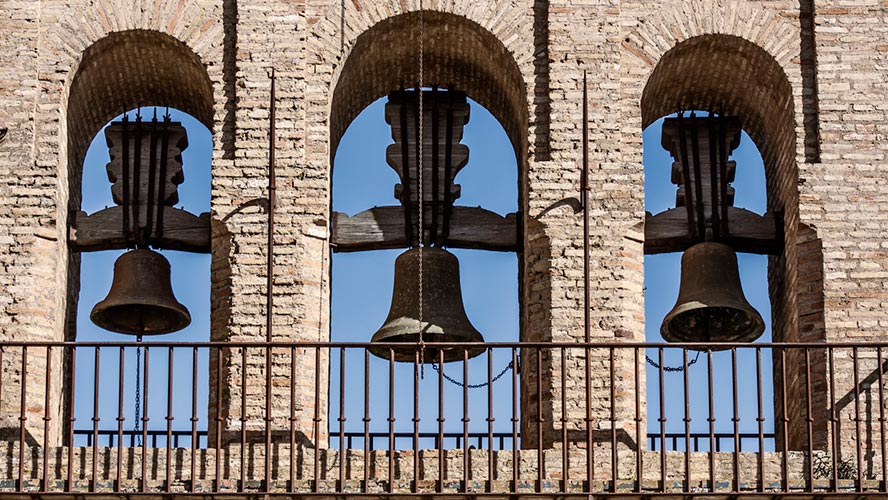
Without a common enemy in the Moors, locals begin fighting each other and Portugal sought to fortify its border against the Kingdom of Castile, whose ambition seemed to know no end at that time. Luckily, Aracena was not won through bloodshed but was actually handed over to Castile in the Treaty of Alcañices in 1297. This treaty defined the border between the kingdoms of Portugal and Castile and remains practically unchanged today as the border between Portugal and Spain. Once the treaty was signed, the Kingdom of Castile created what they called the Galician Band, a series of fortifications along the border, in which Aracena Castle was a vital component.
A Visit to Aracena Castle
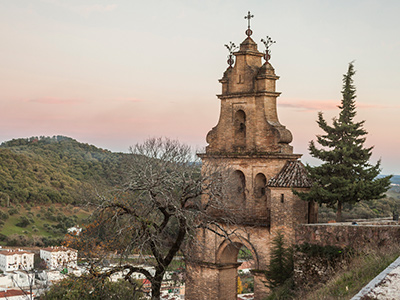
Whether you are a history buff or not, a walk along the ramparts and a climb up the towers of Aracena Castle, with their incredible panoramic views of the area, is more than enough reason to visit the castle.
If you are a history buff, however, then you will find more than just ramparts in this castle. After the so-called ‘Reconquest’ the Christians tore down the old Moorish fortifications and built their own on top. However, thanks to the work of archaeologists, the Moorish past is still visible today. After walking the ramparts, now you can head down and see the archaeological remains of a Moorish residence, with its original patio the style of which is still imitated by Andalusian homes today.
The castle fell into disrepair for many years but in 2015 it was finally opened to the public, even though restauration is still ongoing. In 2019, however, plans were announced to restore all the fortresses in the Galician Band, so the Main Tower, the water cisterns and the outer walls will all be fully restored very soon, and visitors will benefit from state-of-the-art informative presentations of the castle’s past.
What else to see near Aracena Castle
Excursions into the Sierra de Aracena y Picos de Aroche Natural Park are highly recommendable but Aracena town itself is not without certain gems worth visiting beforehand:
-
Plaza Alta:
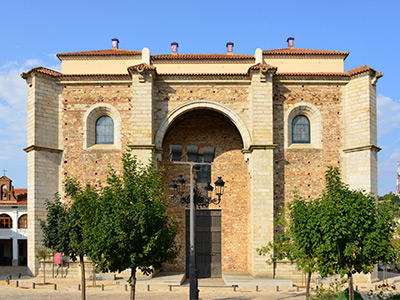
Church of the Assumption
This 16th century square was built as soon as the population outgrew the walled part of the city, making it one of the oldest parts of Aracena. Today, its paved streets lead visitors up to the majestic Iglesia de la Asunción – a church with a pretty garden in front – and the old and new Town Halls, the latter being built by Aníbal González, who famously designed the Plaza de España in Seville.
-
The old Town Hall.
This Renaissance building is the home of the Centre for the Interpretation of the Sierra de Aracena y Picos de Aroche Natural Park. Inside, there are many audio-visual presentations that teach visitors about the geology and the climate of this National Park as well as the culture, customs and cuisine that has arisen from its towns and villages.
-
Iglesia de la Asunción:
The Church of the Annunciation is the most spectacular example of the transition from Medieval to Renaissance
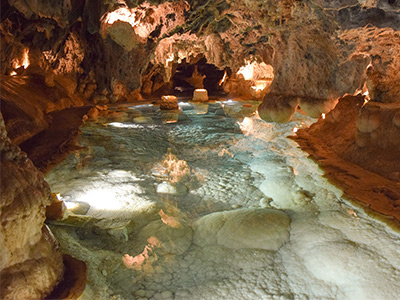
culture in Aracena and it is surrounded by other buildings displaying the changing of tastes at that time in Plaza Alta. Although it is only a church, it gives the sensation of looking at a cathedral, with its imposing outer walls and beautiful sculptures beneath its vaulted ceilings within.
-
The Grotto of Marvels:
This cave in the centre of the city was actually the first to be opened to the public in Spain, in 1914. Its popularity among tourists is certainly well deserved, with its turquoise lagoons and underground rivers, natural columns, stalagmites and stalactites and a number of other natural formations that seem more of fantasy than reality. Be sure to book a visit in advance because you do not want to miss this jewel in the heart of Aracena.





























































